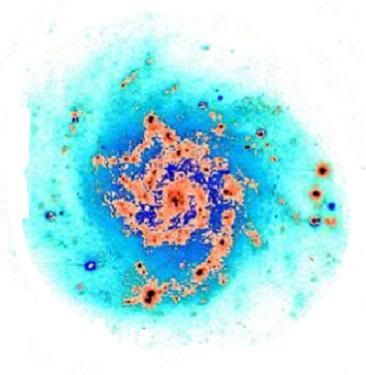|
|
Post by glactus on Jun 4, 2011 22:11:11 GMT
 The Eskimo nebula The Eskimo Nebula (NGC 2392), also known as the Clownface Nebula or Caldwell 39, is a bipolar double-shell planetary nebula. when discovered by William Herschel on January 17, 1787, in Slough, England, he described it as "A star 9th magnitude with a pretty bright middle nebulosity equally dispersed all around. A very remarkable phenomenon. The formation resembles a person's head surrounded by a parka hood. It is surrounded by gas that composed the outer layers of a Sun-like star. The visible inner filaments are ejected by strong wind of particles from the central star. The outer disk contains unusual light-year long orang filaments.  An X-ray of the Eskimo nebula NGC 2392 lies more than 2,870 light-years away in the constellation of Gemini and is visible with a small telescope. Apparent magnitude is 10.1. NGC 2392 can be easily located between the stars Kappa and Lambda Geminorum, about 1° southeast of the wide double star 63 Geminorum. With low power it is an unimpressive sight, appearing to be little more than a star surrounded by dim haze. However, increased magnification and a little patience bring out some interesting details.  Looking at the Eskimo Credits: These are NASA/Hubble images Text by Wikipedia Telescope in Avatar: Meade 16" LX 200 |
|